Introduction to On-Page SEO and Its Importance
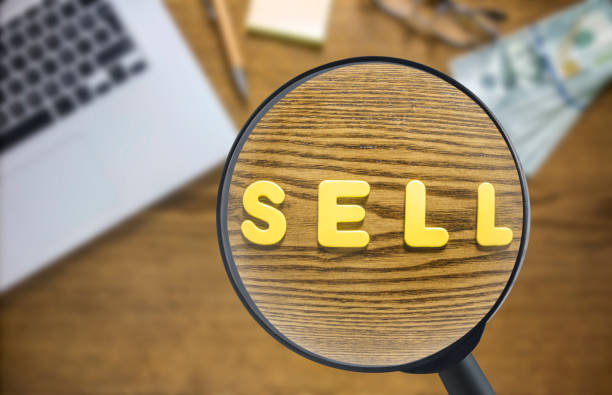
On-Page SEO, or on-page search engine optimization, is a set of actions performed within your website to improve its ranking in search results.
This approach means optimizing individual web pages to attract more relevant traffic from search engines.
Understanding the importance of on-page SEO is crucial for any business that aims to be visible online.
This process goes beyond merely placing keywords; it includes optimizing #URL structure, #title tags, #meta descriptions, #headings, #image content, and overall #content quality.
The main goal of #on_page_SEO is to help search engines like Google better understand your page’s topic and, consequently, display it to the right users.
Without a strong on-page SEO strategy, even the best content may never reach its target audience.
This aspect of search engine optimization directly controls factors that can improve user experience and signal to search engines that your page is high-quality and relevant.
Ultimately, investing in on-page SEO leads to increased organic traffic, improved keyword rankings, and higher conversion rates, all of which contribute to your sustainable business growth.
This is a fundamental foundation for any successful digital marketing strategy.
Is your company’s website as professional and trustworthy as it should be? With specialized corporate website design by Rasawp, create an online presence that reflects your credibility and attracts more customers.
✅ Create a powerful and professional image for your brand
✅ Convert visitors into real customers
⚡ Get a free consultation now!
Keyword Research for Successful On-Page SEO
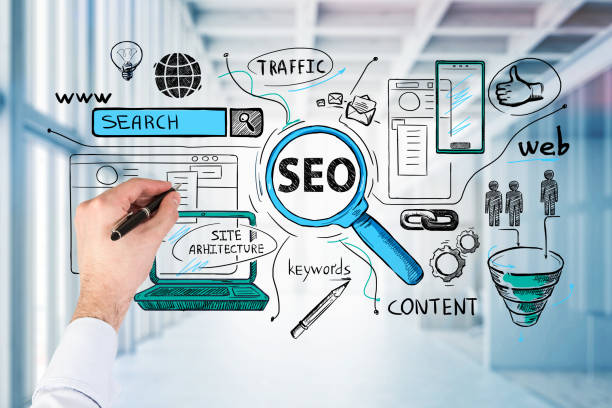
Keyword research is an integral part of any on-page SEO strategy and can be considered the backbone of content optimization.
The goal of this process is to identify phrases and words that your target audience uses in search engines to find information, products, or services related to your business.
Deep and specialized keyword research helps you produce content that is not only relevant but also has real demand.
Types of keywords include short-tail keywords (like “SEO”), long-tail keywords (like “How to improve my website’s on-page SEO?”), and LSI (Latent Semantic Indexing) keywords, which are conceptually related to the main keyword.
To perform this research, various tools like Google Keyword Planner, Ahrefs, and Semrush provide data on search volume, competition, and related suggestions.
The key point here is understanding user intent behind the search; is the user looking for information (informational intent), purchasing a product (commercial intent), or navigating to a specific website (navigational intent)? Aligning your content with user intent significantly increases your ranking chances.
After identifying suitable keywords, the next step involves naturally and intelligently integrating them into the page title, meta description, headings, and content body.
Overuse of keywords (keyword stuffing) not only disrupts user experience but can also lead to penalties from search engines.
A successful on-page SEO strategy focuses on producing content that, while optimized for search engines, is valuable and engaging for the reader.
This analytical and guiding approach to keyword research is the initial and crucial step for success in the field of on-page SEO.
Content Optimization: The Heart of On-Page SEO
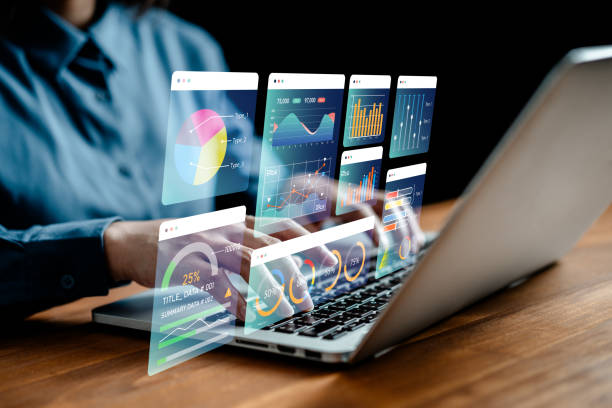
Content is literally the heart of any on-page SEO strategy.
Regardless of how technically optimized your website is, if your content is not high-quality, relevant, and engaging, achieving high rankings in search engines will be difficult.
Content optimization goes beyond simply placing keywords; this process involves creating content that is not only understandable to search engines but also answers users’ needs and questions and engages them.
Key elements in content optimization for on-page SEO include:
| Element | Description | Importance for SEO |
|---|---|---|
| Title Tag | The first thing seen in search results. | Most impact on CTR and page topic relevance. |
| Meta Description | A brief description of the page content in search results. | Increases Click-Through Rate (CTR), though it doesn’t directly change ranking. |
| Headings (H1-H6) | Organizes content and improves readability. | Helps search engines understand the structure and main topics. |
| SEO-Friendly URL | Web addresses that are short, descriptive, and contain keywords. | Provides clues to users and search engines and improves user experience. |
| Unique and Valuable Content | Content that addresses user needs and provides new information. | Main factor in ranking, attracting backlinks, and increasing user dwell time. |
| Optimized Images and Media | Using alt tags, appropriate size, and compressed format for images. | Improves site speed and content comprehension by search engines. |
Readability and proper text structuring are also very important.
Using short paragraphs, lists, and images can improve user experience and reduce bounce rate.
When users spend more time on your page (Dwell Time), this sends a positive signal to search engines that your content is valuable.
From a specialized perspective, aligning content with search intent and comprehensively answering user questions are among the most important aspects of content-based on-page SEO.
Producing Evergreen content that remains relevant for a long time is also one of the effective strategies in on-page SEO that gains more value over time.
This descriptive and specialized approach ensures that your content not only ranks well but also attracts high-quality traffic.
The Role of User Experience and Site Speed in On-Page SEO

In today’s world of on-page SEO, user experience (UX) and site speed are recognized as two vital and influential factors in website ranking.
Google increasingly emphasizes user experience signals, as the ultimate goal of this search engine is to provide the best possible results to users.
A website with poor user experience, even if it has excellent content, may drop in search results.
Signals like Bounce Rate, Time on Page, and Click-Through Rate indicate to Google how satisfied users are with your content.
Site loading speed also plays a significant role in UX and, consequently, in on-page SEO.
Today’s users expect websites to load within a few seconds, and any delay can lead to site abandonment and an increased bounce rate.
Google is well aware of this and has considered site speed as an official ranking factor, especially with the introduction of Core Web Vitals.
Core Web Vitals include three main metrics: LCP (Largest Contentful Paint), which measures the loading time of the largest visual element; FID (First Input Delay), which indicates the site’s responsiveness to the user’s first interaction; and CLS (Cumulative Layout Shift), which assesses the visual stability of the page.
Mobile optimization is also a vital component of on-page SEO and UX.
Given that a significant portion of searches are performed via mobile devices, Google’s mobile-first indexing means that your site’s mobile version is used for evaluation and ranking.
Responsive Design, which optimizes your site for any screen size, is essential.
In general, focusing on providing a smooth, fast, and enjoyable user experience not only benefits your users but also directly impacts your on-page SEO performance and ultimately helps grow your organic traffic.
This is an analytical and guiding approach that highlights the importance of adapting to modern web standards.
Frustrated with your e-commerce site’s low conversion rate? Rasawp transforms your e-commerce site into a powerful tool for attracting and converting customers!
✅ Significant increase in visitor-to-buyer conversion rate
✅ Unparalleled user experience to boost customer satisfaction and loyalty⚡ Get a free consultation from Rasawp!
Technical On-Page SEO: From Site Structure to Sitemaps

The technical aspect of on-page SEO addresses the website’s technical infrastructure to ensure that search engines can easily crawl, index, and understand your website.
This aspect of on-page SEO often happens in the background but has a profound impact on the discoverability of your content.
Without a strong technical foundation, even the best content may never reach its full ranking potential.
One of the most important elements in technical on-page SEO is site structure.
A logical and hierarchical structure (like a Silo structure) helps search engines understand the relationships between different pages and recognize their importance.
This is not only beneficial for search engines but also helps users navigate your site easily.
Other key elements in technical SEO include:
- XML Sitemaps: An XML file that lists all important pages of your website and helps search engines understand your site’s structure and discover new pages faster.
This sitemap should be regularly updated and submitted to Google Search Console. - Robots.txt File: This file tells search engine crawlers which parts of your website they should ignore.
Proper use of it can help manage crawl budget and prevent less important or duplicate pages from being indexed. - Canonical Tags: When duplicate content exists across multiple URLs (due to technical or design reasons), the Canonical tag tells search engines which version of the page is the original and authoritative one and should be indexed.
This prevents duplicate content issues and potential penalties. - HTTPS: Using the secure HTTPS protocol (Secure Sockets Layer) is not only essential for user security but is also considered a ranking factor by Google.
Site speed optimization, which we discussed in the previous section, is also considered part of technical SEO.
From a specialized perspective, regular review of server log files, identifying and fixing 404 and 500 errors, and ensuring full crawlability of the site by bots are all vital components of a comprehensive technical on-page SEO strategy.
This descriptive and specialized approach ensures that your site is prepared from the ground up for success in search engines.
Internal Linking: Content Networking within Your Website
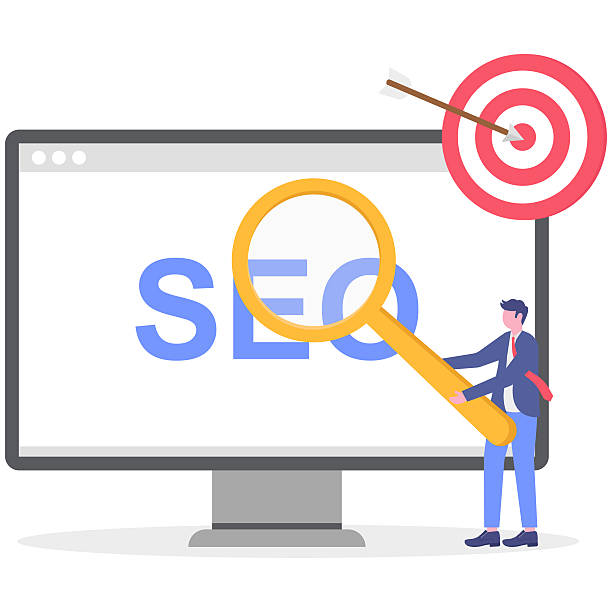
Internal linking is one of the most powerful yet often overlooked aspects of on-page SEO.
This process refers to creating links from one page to another within the same website.
Its main goal is to distribute “Page Authority” or the power and credibility of pages throughout the site, improve user experience, and help search engines discover and index new and older pages.
Unlike external links over which you have less control, internal links are entirely within your control and can be an excellent tool to strengthen your on-page SEO.
Internal links show search engines which pages on your site are more important and how different pages relate to each other.
The more internal links point to an important page, the more important search engines consider that page.
This concept is known as “Link Equity”.
Furthermore, internal links help users easily navigate your website, discover more relevant content, and consequently spend more time on your site, which itself is a positive signal for Google.
Best practices for effective internal linking include:
- Using Descriptive Anchor Text: Instead of using generic phrases like “click here,” use relevant keywords in the anchor text (link text) to help search engines and users understand the topic of the linked page.
- Link to Relevant and High-Quality Content: Always link to pages that are truly valuable to the reader and relevant to the current content.
- Creating a Hierarchical Structure: Link from high-authority pages (such as the homepage or category pages) to deeper and more specific pages.
This helps distribute “link juice” throughout the site. - Checking for Broken Links: Regularly check and fix broken internal links (which lead to 404 pages) to ensure user experience and site crawlability are not compromised.
As an educational guide, whenever you produce new content, look for opportunities to link to existing and relevant pages on your site.
This not only helps strengthen on-page SEO but also “networks” your content and creates a strong informational ecosystem within your website.
Internal linking is a permanent and vital strategy for improving rankings and increasing user engagement on your website.
Reviewing and Analyzing On-Page SEO Performance with Tools
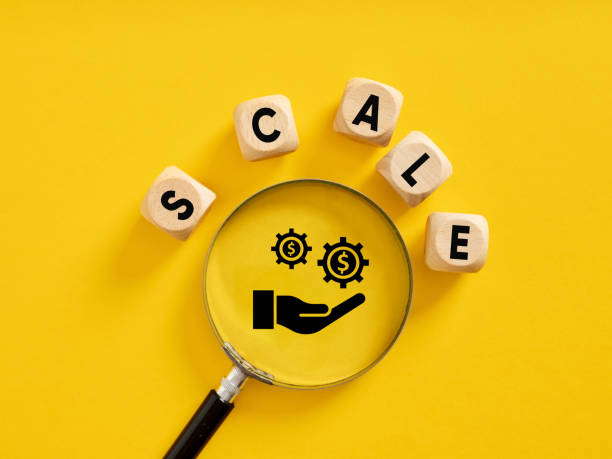
After implementing various on-page SEO strategies, the next crucial step is to review and analyze their performance.
Without close monitoring of results, you cannot determine which actions have been effective and which require further optimization.
Fortunately, powerful tools are available to help you analytically examine your on-page SEO performance.
| Tool Name | Main Use | Impact on On-Page SEO |
|---|---|---|
| Google Search Console (GSC) | Monitoring search performance, crawl errors, indexing, sitemaps. | Identifying technical issues, ranked keywords, improving discoverability. |
| Google Analytics (GA4) | Analyzing user behavior, traffic sources, conversion rates, dwell time. | Understanding user experience, identifying popular pages, optimizing conversion rates. |
| Screaming Frog SEO Spider | Crawling websites to identify technical SEO issues (broken links, redirects, title tags). | Excellent for on-page SEO audits and quickly identifying technical errors. |
| Ahrefs/Semrush | Keyword research, competitor analysis, backlink analysis, site audit. | Comprehensive tools for overall SEO strategy, including aspects of on-page SEO. |
| Google PageSpeed Insights | Measuring and suggesting improvements for page loading speed. | Directly impacts Core Web Vitals and user experience. |
By using these tools, you can monitor Key Performance Indicators (KPIs) such as keyword rankings, organic traffic, bounce rate, time on page, and conversion rate.
For example, if you notice that a specific page receives low traffic despite excellent content, you can use GSC to see if there’s an indexing issue.
If the bounce rate is high, Google Analytics helps you understand user behavior more deeply and optimize content or design to improve UX.
A specialized approach in this area includes performing regular on-page SEO audits.
These audits allow you to identify and fix technical, content, and structural issues.
Continuous data analysis not only provides you with valuable insights but also allows you to constantly improve your on-page SEO strategy and surpass your competitors.
This analytical section is essential for any SEO specialist to ensure that on-page SEO efforts lead to desired results.
Common Mistakes in On-Page SEO and How to Avoid Them
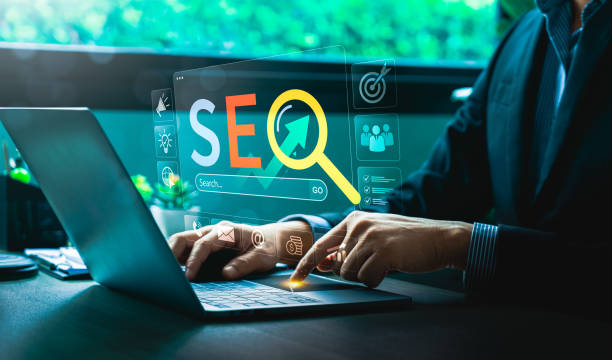
On the path to optimizing your website for search engines, making common mistakes in on-page SEO can render your efforts ineffective.
Understanding these errors and how to avoid them is crucial for maintaining SEO health and achieving higher rankings.
This section serves as an educational guide to make you aware of common pitfalls in on-page SEO.
One of the most common mistakes is keyword stuffing, or the excessive use of keywords.
In the past, some webmasters tried to trick search engines by repeatedly stuffing keywords.
But modern Google algorithms quickly identify these tactics and penalize websites.
The focus should be on natural and meaningful use of keywords that help improve readability and provide value to the user.
Another common mistake is low-value or thin content.
Pages with little content, providing no useful information, or simply copied from other sources, have little value for search engines.
Google rewards comprehensive, unique, and valuable content that answers user questions and meets their needs.
Duplicate Content is also a major challenge.
This problem can occur when different versions of a page (e.g., with/without www, HTTPS/HTTP, or URL parameters) are not properly managed without using Canonical tags.
This can confuse search engines and lead to a reduction in the credibility of your pages.
Other common mistakes in on-page SEO include:
- Ignoring Meta Descriptions: Although they don’t directly change ranking, they affect the Click-Through Rate (CTR) in search results.
- Broken Links: Internal or external links that point to deleted or incorrect pages disrupt user experience and send negative signals to search engines.
- Poor Mobile User Experience: Given mobile-first indexing, websites not optimized for mobile will not rank well.
- Lack of Image Optimization: Failure to use descriptive alt tags and optimize image sizes can eliminate SEO opportunities and reduce site speed.
To avoid these mistakes, always adopt a user-centric approach.
Every decision you make for your on-page SEO should first be based on the best user experience.
Regular SEO audits and the use of analytical tools can help you identify and resolve these issues and pave your way to success in on-page SEO.
Are you worried about losing customers because you don’t have a professional e-commerce site?
With e-commerce website design by Rasawp, forget these worries!
✅ Significant increase in sales and visitor-to-customer conversion rate
✅ Professional and user-friendly design that builds customer trust
⚡ Get a free consultation from Rasawp
The Future of On-Page SEO: AI and Voice Search
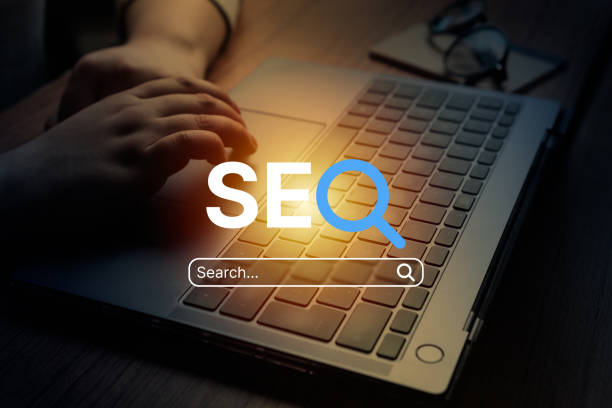
The future of on-page SEO is rapidly evolving, with two main trends, namely Artificial Intelligence and voice search, playing pivotal roles in these changes.
Understanding these developments and preparing on-page SEO strategies based on them is essential for competitiveness in the coming years.
This section, acting as a news analysis and thought-provoking content, examines how these technologies impact on-page optimization.
Artificial Intelligence (AI) is no longer a futuristic concept; this technology is already deeply integrated into Google’s algorithms, including RankBrain, BERT, and more recently, MUM.
These algorithms allow Google to understand the true intent behind user searches with unprecedented accuracy.
This means that merely matching keywords is no longer enough; your content must comprehensively answer user questions and have a strong semantic connection to the search topic.
For on-page SEO, this means focusing on producing comprehensive, accurate, and authoritative content that delves deep into the topic and provides complete answers.
Voice search has also become increasingly popular, especially with the proliferation of voice assistants like Siri, Alexa, and Google Assistant.
The main difference between voice search and text search is that users tend to phrase their questions more conversationally and longer.
This means that long-tail keywords and complete questions (like “Where is the nearest Italian restaurant in Tehran?”) gain more importance.
To optimize on-page SEO for voice search, you should structure your content to directly answer questions, use natural language, and include sections like FAQ (Frequently Asked Questions) on your pages.
Other concepts like E.A.T (Expertise, Authoritativeness, Trustworthiness) have also gained more importance with the advent of AI.
Google wants to ensure that the information it provides comes from reliable and expert sources.
Therefore, in on-page SEO, you must ensure that your content is written by experts, provides accurate information, and is supported by credible sources.
Visual search and on-page SEO for video are also growing.
Optimizing images with descriptive alt tags and proper file naming, as well as optimizing videos for platforms like YouTube, helps attract traffic from these channels.
Considering these trends, your on-page SEO strategy must be flexible and forward-looking to keep pace with algorithm changes and user behavior.
Conclusion and Comprehensive On-Page SEO Strategy for 2024
![]()
In this article, we comprehensively examined various aspects of on-page SEO, exploring it from its fundamentals to advanced details.
From the definition of on-page SEO and its importance in achieving online visibility, to the depth of keyword research, content optimization, the vital role of user experience and site speed, the importance of technical on-page SEO, and internal linking, all these elements constitute the essential components of a successful strategy.
For 2024 and beyond, a comprehensive on-page SEO strategy must go beyond simply adhering to checklists.
This strategy should be a holistic and continuous approach centered around the user.
Search engines are increasingly focusing on understanding user intent, providing complete answers, and creating the best possible experience for them.
Key Elements of a Comprehensive On-Page SEO Strategy for 2024:
- Deep Keyword Research: Beyond primary keywords, look for long-tail keywords, conversational questions, and LSI phrases to cover the full user intent.
- Comprehensive and High-Quality Content Production: Write content that not only provides complete and accurate information but is also readable, engaging, and well-structured.
Use images, videos, and charts to enrich the content. - Technical Site Optimization: Ensure the technical health of your website.
High loading speed, mobile compatibility, logical URL structure, proper use of XML sitemaps and Robots.txt, and correct management of Canonical tags are of paramount importance. - Strategic Internal Linking: Create a strong network of internal links to distribute page authority and help users and search engines navigate the site.
Use descriptive anchor texts. - Focus on User Experience (UX): Take Core Web Vitals metrics seriously.
Ensure your site is fast, responsive, and enjoyable for users. - Continuous Auditing and Analysis: Regularly monitor your on-page SEO performance using tools like Google Search Console and Google Analytics.
Identify problems and discover opportunities for improvement. - Preparing for the Future: Be familiar with advancements in AI and voice search and prepare your content for these changes.
On-page SEO is not a one-time process but a continuous effort.
By implementing these guidelines and maintaining a dynamic approach, you can ensure that your website performs optimally in search results and contributes to the sustainable growth of your online business.
This is a specialized and guiding strategy for mastering the digital arena.
Frequently Asked Questions
| Question | Answer |
|---|---|
| What is On-Page SEO? | It refers to the set of actions performed within a website to improve its ranking in search engines. |
| Why is On-Page SEO important? | Because it helps search engines better understand your site’s content and structure, and it improves user experience. |
| What are the most important elements of On-Page SEO? | Title and meta descriptions, keywords, URL structure, quality content, image optimization, internal linking, and site speed. |
| How to optimize Title Tags and Meta Descriptions? | The title should include the main keyword and be engaging, and the meta description should be a compelling summary of the content with relevant keywords. |
| What is the role of keywords in On-Page SEO? | Keywords tell search engines what the page content is about and should be used naturally and intelligently within the text. |
| How is image optimization done for On-Page SEO? | By compressing the size, using descriptive file names, and filling the Alt tag with relevant descriptions and keywords. |
| What is Internal Linking and what is its use? | It is the connection of different pages on a site to each other. This helps distribute Page Authority and improves search engine crawling. |
| What is the importance of site loading speed in On-Page SEO? | High speed improves user experience and is an important ranking factor for search engines like Google. |
| What effect does site responsiveness (Mobile-Friendliness) have on On-Page SEO? | Given the increase in mobile users, responsiveness is essential for providing a suitable user experience across all devices and for Google’s mobile-first indexing priority. |
| What are the important content-related factors in On-Page SEO? | Originality, quality, comprehensiveness, readability, proper use of headings (H1, H2,…), and regular content updates. |
And other services of Rasa Web Advertising Agency in the field of advertising
Smart Digital Branding: A combination of creativity and technology to increase sales by customizing user experience.
Smart Data Analysis: Revolutionize customer acquisition with custom programming.
Smart Sales Automation: Designed for businesses seeking to analyze customer behavior through SEO-driven content strategy.
Smart Content Strategy: Designed for businesses seeking to manage campaigns through the use of real data.
Smart Sales Automation: A professional solution for increasing click-through rates with a focus on using real data.
And over hundreds of other services in the field of internet advertising, advertising consulting, and organizational solutions
Internet Advertising | Advertising Strategy | Advertorial
Sources
Faratech On-Page SEO Guide
Sibweb SEO Checklist
IranHost On-Page SEO Tips
Rank Plus Advanced SEO Strategies
? For your business to grow and shine in the online space, Rasaweb Afarin Digital Marketing Agency is by your side with the best services. To elevate your digital presence and learn more about our solutions, including our professional services in personal website design, please visit.
📍 Tehran, Mirdamad Street, Next to Central Bank, Kazeroun Jonoubi Alley, Ramin Alley No. 6



